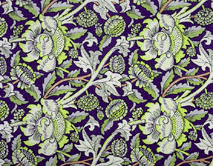Unity/Harmony
-the presentation of an integrated image
-means that a congruity or agreement exists among the elements in a design
-they look as though they belong together
Visual Unity
-the whole must be predominant over the parts: you must first see the whole pattern before you notice the individual elements.
Proximity
-an easy way to gain unity
-to make separate elements look as if they belong together
-simply putting the elements close together
Repetition
-something simply repeats in various parts of the design to relate the parts to each other
Continuation
-something "continues" -usually a line, an edge, or a direction from one form to another
-the viewer's eye is carried smoothly from one to the next
Continuity
-visual relationship between two or more individual designs
Grid
-determines page margins and divides the format into areas used on successive layouts
Varied Repetition
-same type of object/scene varied slightly each image
Emphasis on Unity
-examples: Identical Twins, Irises, Company at Table
Emphasis on Variety
-examples: Poster for Art Directors Club of Paris, New Stones Newton's Tones, The Librarian
Chaos and Control
-examples: Signs along Route 66, Bland Unity of a Housing Subdivision, Guggenheim Museum












